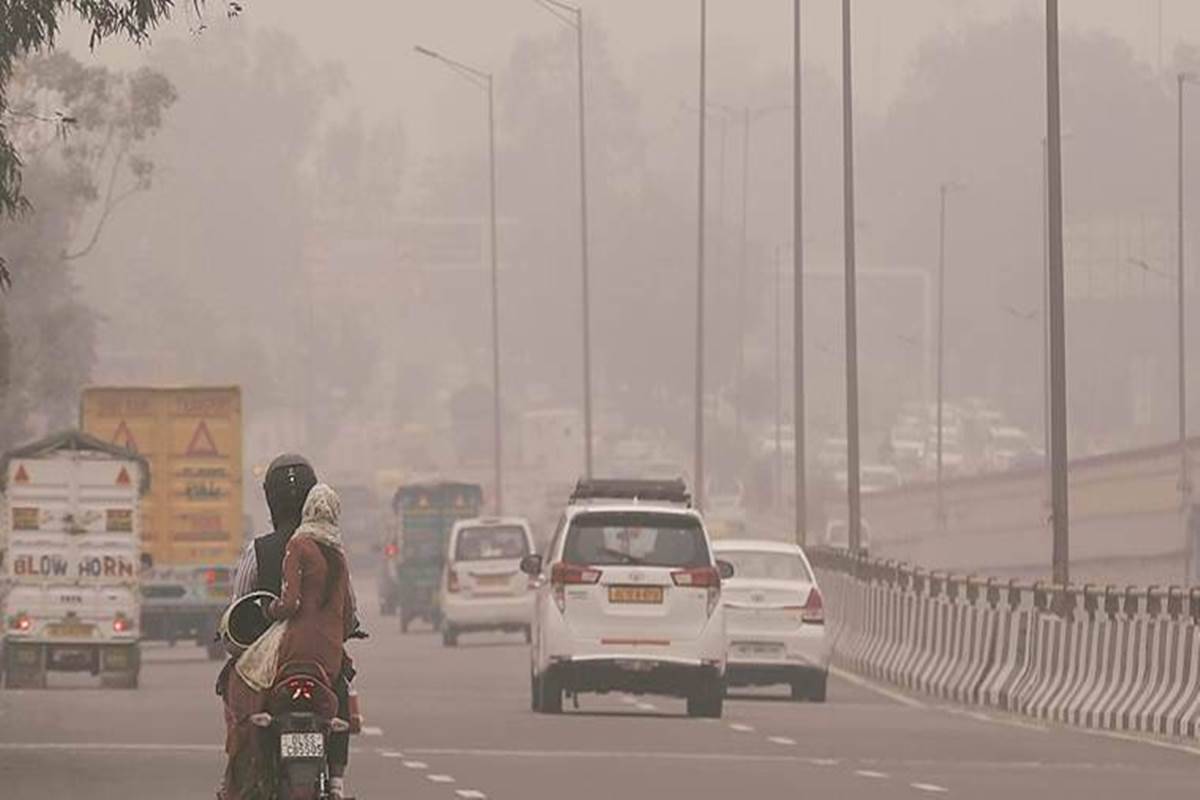New Delhi : The national capital’s air quality was recorded in the “very poor” category on Friday morning, while a government forecasting agency said some improvement is likely due to favourable wind speed.
On Thursday, the city’s air quality index (AQI) touched “severe” levels for a brief period before slipping back into the “very poor” category.
According to the Ministry of Earth Sciences’ air quality monitoring agency, SAFAR, the share of stubble burning in Delhi’s PM2.5 pollution was 36 percent on Thursday — the maximum so far this season.
Delhi recorded an AQI of 380 at 9:30 am. The 24-hour average AQI was 395 on Thursday. It was 297 on Wednesday, 312 on Tuesday, 353 on Monday, and 349 on Sunday.
Several monitoring stations, including at Shadipur (417), Patparganj (406), Bawana (447) and Mundka (427), recorded air quality in the “severe” category.
An AQI between 0and 50 is considered ‘good’, 51 and 100 ‘satisfactory’, 101 and 200 ‘moderate’, 201 and 300 ‘poor’, 301 and 400 ‘very poor’, and 401 and 500 ‘severe’.
On Thursday, PM10 levels in Delhi-NCR peaked to 424 microgram per cubic meter (µg/m3) at 10 am — the highest this season so far, according to CPCB data. PM10 levels below 100 µg/m3 are considered safe in India.
PM10 is particulate matter with a diameter of 10 micrometers and is inhalable into the lungs. These particles include dust, pollen and mold spores.
The levels of PM2.5 – finer particles which can even enter the bloodstream – were 231 µg/m3. PM2.5 levels up to 60 µg/m3 are considered safe.
NASA’s satellite imagery showed a large, dense cluster of fires that covered most parts of Punjab and some regions of Haryana.
According to SAFAR, the share of stubble burning in Delhi’s PM2.5 concentration was 36 percent on Thursday. It was 18 percent on Wednesday, 23 percent on Tuesday, 16 percent on Monday, 19 percent on Sunday and 9 percent on Saturday.
SAFAR said accumulation of locally generated pollutants and increased external intrusion due to north-north westerly boundary level winds from regions where stubble is burnt were the major factors for the increase in PM2.5 levels.
“Extremely calm surface and boundary layer winds along with the low night time boundary layer height resulted in low ventilation… practically stagnant, no dispersion condition has resulted in the current situation,” it said.
An increase in surface wind speed and better ventilation conditions are likely to “significantly” improve the situation by Saturday, SAFAR said.
According to the India Meteorological Department, the predominant wind direction was northerly and the maximum wind speed was 10 kilometers per hour. The minimum temperature was recorded at 13.1 degrees Celsius. It was 12.5 degrees Celsius on Thursday – the lowest in October in 26 years.
Calm winds and low temperatures trap pollutants close to the ground, while favourable wind speed helps in their dispersion.
The city’s ventilation index – a product of mixing depth and average wind speed – is likely to be around 7,000 meter square per second on Friday – favourable for dispersion of pollutants.
Mixing depth is the vertical height in which pollutants are suspended in the air. It reduces on cold days with calm wind speed.
A ventilation index lower than 6,000 sqm/second, with the average wind speed less than 10 kmph, is unfavourable for dispersal of pollutants.
On Thursday, the Centre introduced a new law through an ordinance that put in place a powerful oversight body to curb air pollution.
Under the ordinance released by the Union ministry of law and justice on Thursday, the 22-year-old Environment Pollution (Prevention and Control) Authority (EPCA) has been dissolved and replaced by a powerful commission comprising 18 members.
The Commission for Air Quality Management in the National Capital Region and Adjoining Areas will specifically look at Delhi-NCR and adjoining areas only and it will be binding on the states to follow its directions. (AGENCIES)
Trending Now
E-Paper


